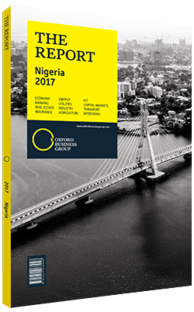Development of local supply chain revitalises Nigeria's textiles industry
Nigeria once had a thriving textiles industry, but as with so many of its peers across the continent, the sector has suffered under intense competition following the end of the Multi-Fibre Arrangement (MFA), which set rules for the international trade of textiles and garments until 2004. Given the role the MFA played in relation to employment, the development of a local supply chain and the fulfilment of the government’s import substitution policies, revitalising the sector is a priority.
The sector’s impact on job creation may not be as significant as it was during the peak of Nigeria’s textiles sector in the 1980s, as mechanical automation and improvements in technology have meant that fewer workers are needed. However, the sector has been identified a chief area of light manufacturing under the government’s Economic Recovery and Growth Plan. Nigeria is hoping to attract $1.9bn in investment by 2019, and believes it could capture the N3.2bn ($11.3m) in annual value that now goes to import markets.
Market Potential
Nigeria currently has 25 textile mills, which run at a sector average of 40% capacity and employ around 25,000 people in total. While these numbers are down from the late 1980s, when the sector comprised 180 mills and a 350,000-strong workforce, the belief that growth can return to the sector rests on the country’s abundant supply of raw materials. Cotton grows in 26 of Nigeria’s 36 states, and West Africa is the fifth-largest producing region globally, according to local media. Local cotton prices are around half the cost of those from the three largest growing countries – the US, China and India, according to local media – as production is dominated by small-scale farmers in West Africa, which gives buyers leverage in price setting.
Fabrics
Among the categories of textile products that the domestic industry could most readily compete is print fabrics. Rolls of bright, patterned cloth have a huge market in Nigeria and across Africa, where they are made by hand into ready-to-wear clothing. As reported by local media, Chinese imports currently account for 60% of the print fabric market in Africa, with India supplying an additional 21%. West Africa itself is a large market for prints and buys around 65% of all foreign imports. Nigerian demand accounts for around 38% of total imports in the region.
With Nigerian cotton potentially coming at a cost of less than half of that for Chinese or Indian alternatives, there is a competitive advantage for local production, particularly since cotton accounts for 40% of the cost of production of print fabric. Equally crucial for local producers, Nigeria has low-tariff access to 130m consumers in the West African region through its membership in ECOWAS. The bloc has established a common external tariff among its 15 member countries, with different rates for textile products, depending on whether they are finished, and intermediate goods.
Obstacles
However, tapping into Nigeria’s competitive advantages will not be without its challenges. Electricity counts for about 15% of production costs due to inconsistent power supply, which leads manufacturers to rely on more-expensive backup generators.
The current currency crisis is another challenge. A ban on imported textiles in place since 2010, while nominally beneficial for the sector, also encourages informal market activity, and smuggled products account for an estimated 85% of fabric sold in the country. As is the case in so many sectors in Nigeria, one of the key constraints facing textile producers is financing, without which capital expansions are unlikely. In 2009 the previous administration created a N100bn ($353.4m) textile fund that made financing available at a 6% interest rate.
To address the issues facing foreign investors, the government is offering a package of incentives, including tax-free imports of equipment and inputs to 2019, as well as a three-year tax holiday. Additionally, preferential treatment in the procurement process is being provided, which means that these investors will have first access to potentially lucrative government contracts for state-run schools, as well as the military.
You have reached the limit of premium articles you can view for free.
Choose from the options below to purchase print or digital editions of our Reports. You can also purchase a website subscription giving you unlimited access to all of our Reports online for 12 months.
If you have already purchased this Report or have a website subscription, please login to continue.

